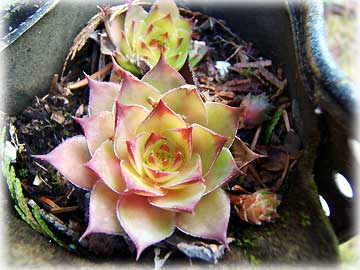 Do You Know What Your Flowers Are Saying? By Sharon Allen March 27, 2006
But the question is: as we
go about our yearly ritual of growing green, do we have any idea
what our flowers, herbs and plants are saying to, for and about
us? During the reign of Queen Victoria in England, (1837 to 1901), flowers were found everywhere. They were gardened, depicted, garnered, displayed, gifted, distilled and worn. The scent of a recognizable scent on a handkerchief could send a unique message to a man if dropped in his presence. A woman could be swept off her feet or into a rage depending on which flowers where picked for a "Secret Message" bouquet by her lover. And it didn't stop there. Color and size mattered too, as did how they were held, arranged, grouped together, or given. Upright meant positive thoughts, upside-down meant negative ones, right hand meant, "Yes" and left hand meant "No." Another way to imply "Yes" was to touch a flower to the lips and "No" was declared by pinching off a petal and casting it away. And if you wanted to used the words "I am," "I have," or "I offer you" in your message, you would wrap a laurel leaf around the bouquet, fold an ivy leaf together or include a leaf of Virginia creeper, respectively. These "Tussie-Mussies" as they were called, were usually small bouquets of flowers wrapped in lace and tied with ribbon or, in more prestigious relationships, placed in a small cone-shaped pewter or silver holders. It was a very fashionable pastime back then, and though it is not as trendy today, it is gaining in popularity. Of course, surveys state that Brides still lead the rest of us in this interest. Florists are quick to inform of the practice and are quite helpful in enlightening them as to which flowers mean what. Often, the bouquet in a wedding will hold blooms chosen very carefully in order to give good luck or send a secret message of love, fertility and fidelity. But you may notice flowery verbiage grouped together elsewhere as well. For instance, in a bouquet, you may find a striped carnation and a red rose which says, "I love you truly and I wish I could be with you," or you may see a rhododendron in a flowerbed alongside some Marigolds, which means, "Cruelty, Grief and Jealousy - Danger, Beware." So, the next time you buy that pretty wreath, wear that flowery dress or use that Paris perfume, think about what it might be silently saying about you. You don't have to spend a lot of money on buying a flower dictionary at the bookstore or even lug home a stack of books from the library, although it's a sure bet there are plenty of nice printings available on the subject. If you're interested in reading up on it, the Internet has an abundance of information on Floriology. A recent Yahoo search turned up over six million sites for the keywords "flowers" and "meanings." Most of the sites do have the same or very, very similar meanings listed for each herb, plant or flower and it can be a lot of fun getting others involved in looking up the definitions of your posies on the web. Not to mention the fun a reciprocal bouquet can be. So have a great time transplanting,
transposing and translating Springs' sprouting buds, blooms and
bouquets! contact Dick Kauffman at editor@sitnews.us Publish A Letter on SitNews Read Letters/Opinions
|
||
